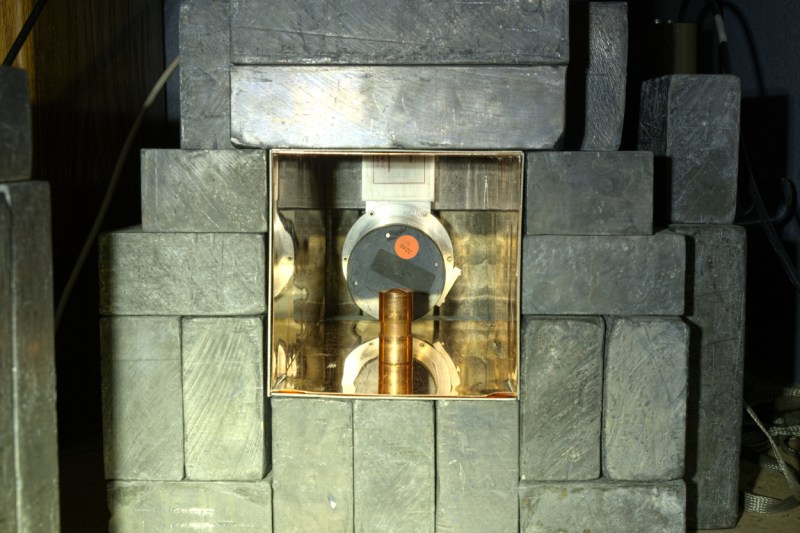It’s widely known that a smoke detector is a good ionizing radiation source, as they contain a small amount of americium-241, a side product of nuclear reactors. But what about other sources? [Carl Willis] got hold of an old Soviet era smoke detector and decided to tear it down and see what was inside. This, as he found out, isn’t something you should do lightly, as the one he used ended up containing an interesting mix of radioactive materials, including small amounts of plutonium-239, uranium-237, neptunium-237 and a selection of others. In true hacker fashion, he detected these with a gamma ray spectroscope he has in his spare bedroom, shielded from other sources with lead bricks and copper and tin sheets.
 The high-energy gamma ray detector that Carl Willis used to analyze the soviet smoke detector, located in his spare bedroom.
The high-energy gamma ray detector that Carl Willis used to analyze the soviet smoke detector, located in his spare bedroom.
He digs further into this analysis, using the ratio of plutonium to americium to determine the age of the source, concluding that the radioactive material in his sensor was produced in 1968, then processed in about 1972. By digging into the statistics of the ratios, he concludes that it qualifies as reactor grade plutonium, not the purer weapons grade that those looking to make big booms seek. It is also worth pointing out that we aren’t talking about enough plutonium here to do much with: he estimates that there is less than 1 mg of plutonium-240 in the source. It’s also worth remembering that the americium in your smoke detector came from plutonium:it’s a natural decay product of it, although the stuff used in the US has the plutonium removed. We’ve featured the work of [Carl Willis] before, such as his home-made Farnsworth Fusor that can fuse hydrogen into helium.
Comments
Post a Comment